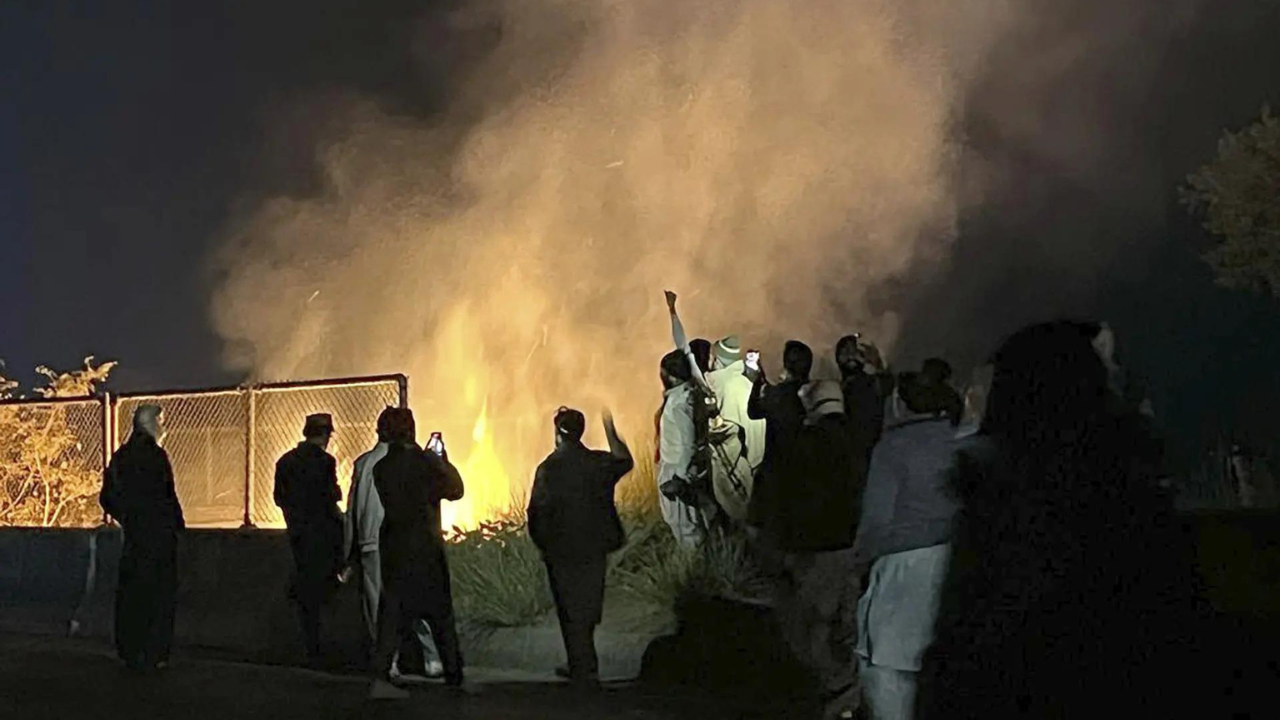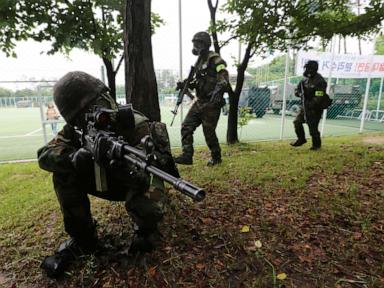ARTICLE AD BOX
North Korean leader Kim Jong Un said a missile test this week shows his country would not hesitate to launch a nuclear attack if an enemy provokes it with strategic weapons, as observers say he is moving to make such forces operational.
Kim's comments are the latest in a series of statements and legislative changes that have outlined an expansive, ambiguous, and potentially destabilising doctrine, analysts said.
Here is what we know about how and when North Korea says it could use its nuclear weapons.
When Could North Korea Use Its Nukes?
North Korea says that it opposes war, that its nuclear weapons are for self-defence, and that they are necessary for protection in the face of "hostile" policies from Washington, South Korea, and Japan.
In a speech at a military parade last year, Kim said his nuclear force was tasked with preventing war through deterrence, and potentially carrying out strikes against anyone who violates the North's "fundamental interests".
Analysts said the comments appeared to mirror language used by the United States' Nuclear Posture Review, which says it will use nuclear weapons to defend its "vital interests" or those of its allies.
In September 2022, North Korea enshrined the right to use preemptive nuclear strikes to protect itself in a new law.
Among the scenarios that could trigger a nuclear attack would be the threat of an imminent nuclear strike; if the country's leadership, people or existence were under threat; or to gain the upper hand during a war.

Under the law, Kim has "all decisive powers" over nuclear weapons, but if the command-and-control system is threatened, then missiles may be launched "automatically".
State media said the new law bans sharing of nuclear arms or technology with other countries, and is aimed at reducing the danger of a nuclear war by preventing miscalculations among nuclear weapons states and misuse of nuclear weapons.
However, if Kim delegates launch authority to lower commanders during a crisis, that could increase the chances of a catastrophic miscalculation, analysts said.
North Korea further adopted a constitutional amendment to enshrine its policy on nuclear forces in September 2023, with Kim pledging to accelerate production of nuclear weapons to deter what he called US provocations.
North Korean Defence Minister Kang Sun Nam said in July that deployment of U.S. aircraft carriers, bombers or missile submarines in South Korea could meet criteria for its use of nuclear weapons.
Where Could North Korea Target?
In 2017, the year North Korea launched its first successful intercontinental ballistic missile (ICBM), its foreign ministry threatened a nuclear strike on "the heart of the US" if Washington ever showed the "slightest sign of attempt to remove our supreme leadership".
That year North Korea also threatened to use its nuclear weapons to sink Japan into the sea.

In 2022, the powerful sister of Kim Jong Un, Kim Yo Jong, issued a statement warning that the North would not hesitate to use nuclear weapons if attacked by South Korea.
Kim Yo Jong laid out a detailed scenario in which the North mobilised its nuclear forces in response to an attack by the South and used them to "completely dampen the enemy's war spirits, prevent protracted hostilities and preserve one's own military muscle".
What Weapons Does North Korea Have?
North Korea has not tested a nuclear weapon since 2017, but analysts say it has most likely continued to produce uranium and plutonium for warheads.
An April study by the Institute for Science and International Security estimated Pyongyang may have 31 to 96 nuclear weapons, depending on the types of devices it is building.
Kim said in 2021 said that North Korea was able to "miniaturise, lighten and standardize nuclear weapons". In January 2023, he said the country would "exponentially expand" its nuclear arsenal and "mass produce" tactical nuclear weapons.
Pyongyang has also pushed ahead with new missiles to deliver nuclear weapons, including massive liquid- and solid-fuel ICBMs with the range to reach the United States, short-range missiles to deliver tactical warheads, and its first nuclear-armed cruise missiles.
North Korea's use of the term "launch drill" instead of "test firing" to describe an ICBM launch this week suggested the country is ready to mass-produce and deploy Hwasong-18 ICBMs, Cheong Seong-chang, an expert on North Korea's political strategy at the Sejong Institute near Seoul, said in a commentary on Tuesday.
"Next year, North Korea will carry on its power for power posture by testing solid-fuel IRBMs, and SLBMs from strategic nuclear attack submarines and developing multi-warhead ICBMs," he wrote.
(Except for the headline, this story has not been edited by NDTV staff and is published from a syndicated feed.)
.png)
 11 months ago
107
11 months ago
107








 English (US)
English (US)